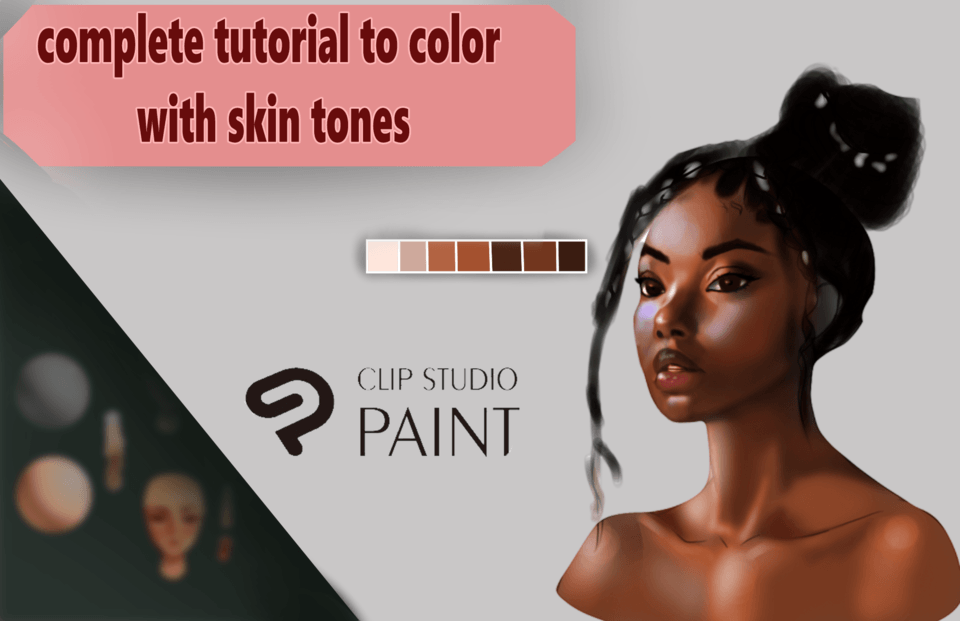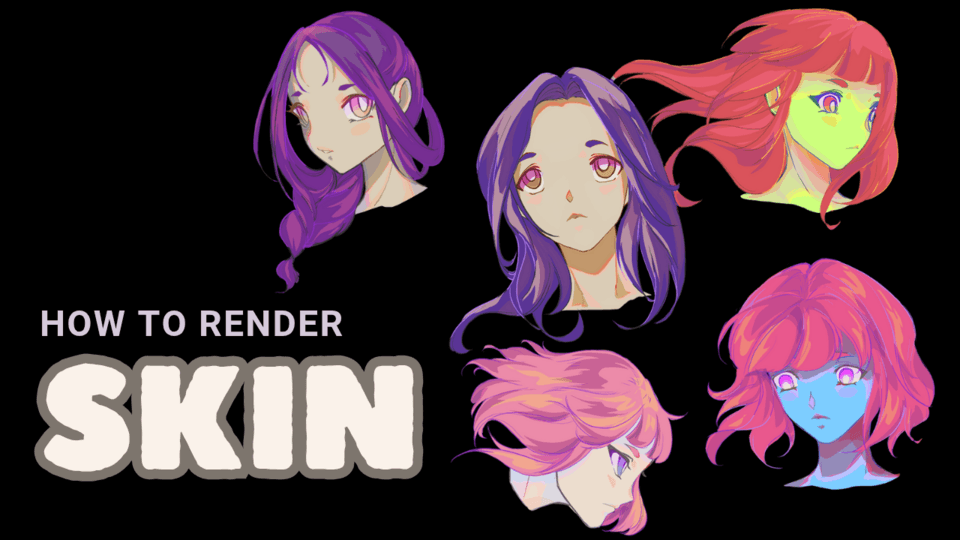How to Draw a Side Profile
Introduction
Hello everyone, and welcome back! In today's tip, I'll be going over an easier way to draw side profiles. Everyone's style is different, so we'll repeat this process in three different art styles. These include chibi/cartoon, anime, and realism. Thanks for clicking, now let's get started!
Anatomy of the Head
Before we take to our three mini tutorials, first we should discuss the different parts of the face that make the side profile look the way it is. Your forehead and temple are backed up by the frontal bone. The back part of your head is the parietal bone, and lastly, the lower part is the occipital bone. While these are just three out of a few other parts of your cranium, these three make up the “curve” in the head. Since it holds the brain, and your brain is not flat, it’s important to replicate this through a rounded head.
As you move down the face, you’ll find yourself at the supraorbital ridge, or brow ridge. This gives you an indication of where to place your character’s eyebrows. Next, you have the nasal bone which is the start, and foundation, of the nose. Under the nose is the philtrum, which is that small dip in the skin you may see in the mirror. Then, the lips. Unless your character has naturally large lips or has had plastic surgery, a common misconception when drawing the mouth is “overpuckering” them. If the expression is meant to be relaxed, the lips should be round, but not protruding too much so that it becomes a sort of duck face.
After the lips is the chin, or mandible, which later leads to the neck. Now, depending on the style your going for, the neck size depends on this as well. A realistic style may have a thick neck, while an anime or chibi style usually has a small neck. It varies!
Step 1: Shape Foundation
Starting off with our cuter side profile, this is where you’ll have the most freedom. Since this style is usually more curved, beginning with circles and ovals is a good way to structure the base of the face.
Next, the anime style is a bit more realistic, but usually lacks the eye bridge and has more curves that are less jagged. The top lip can be noticeably a bit bigger, or not. Again, there are so many different anime styles, but here’s a basic sketch using a combination of a circle, a couple of triangles, and a parallelogram.
The last face shape is the realistic one. In this one, anatomy is your best friend. By referencing our anatomy session from earlier, we can use that to create mostly triangular shapes because of the sharper angles. For this one, I can’t recommend the second sketch layer (prior to the inking layer) enough! It’s especially helpful for developing artists like me to get this extra layer of practice. ;D
I prefer making these shapes in a different color than the color I’m inking/doing the lines with. Following this step, decrease the transparency of this layer and make a new one. You can either go directly to your ink layer or go on to making a second sketch layer that can be erased and manipulated in different ways.
Step 2: Eyes
I suggest using a triangle to give you an idea of what size eye your looking for. Luckily, for side profiles, you only need one eye (yay, no symmetry)!
For these styles, I tried to follow the usual, which includes huge eyes for chibi/cartoon, medium-sized eyes for anime, and small-ish eyes for realism. What also varies between styles is the detail in the eyes, which can be drawn facing the same direction as the face with more of an oval shape instead of the circle when you’re looking at a face head-on. Cartoons and anime depend on the original style when making the eyes, but realism usually follows this specific structure, including the iris, pupil, and highlights. The others can and usually also have these three features. You can usually see a whole palette of different shades in a realistic eye, which is why it’s a rather popular thing to leisurely doodle.
Our final details include the eyelashes that curve outwards in the direction that the person is facing, the eyelid that when up, creates a fold under it. Last but not least, the undereye that leads to the cheek, which may or may not be highlighted depending on the style.
Step 3: Mouth
A common misconception of drawing the inner inked part of the mouth, is the shape that it makes. Think of a (cartoon-esc) raindrop; it starts small and has a sharp angle, but then gets larger and stops at a rounded shape. Now let’s rotate and edit this into our character’s lips for just the realism style, since you rarely see is in the other two, simpler styles. Mess around with it until you like how it looks, and viola, you just drew an eye!
Since there isn’t much to the nose besides the actual shape, I won’t make a subsection just to explain how to draw a nostril. So, as a short tip, the nostril should be curving upwards towards the sky and is thicker end on the side closer to the tip of the nose.
Step 4: Ear
Our last feature is the ear, which undoubtedly can be described as the weirdest part of the face (or at least I thought so)! There is much creative freedom to drawing the ear. It can be an open circle, oval, or inorganic shape that starts curved and becomes a smaller curve as you go down. For this one, I want you to just go with what you feel matches the style you’re going for. I made three levels of realism below, so pick what you like and what you think matches and add your own touch to it!
Takeaway Tips
A few takeaway tips for this month’s tutorial include:
- Use as many basic shapes as you can, whether organic or inorganic, to create your desired dimensions of your character’s face.
- Feel free to go outside the box of commonly accepted anatomy, because, in the end, your style is yours alone!
Thanks so much for taking the time out of YOUR day to watch and/or read my June 2023 tutorial, and I hope you have an amazing day! Until next time, goodbye!
- KK











Comment